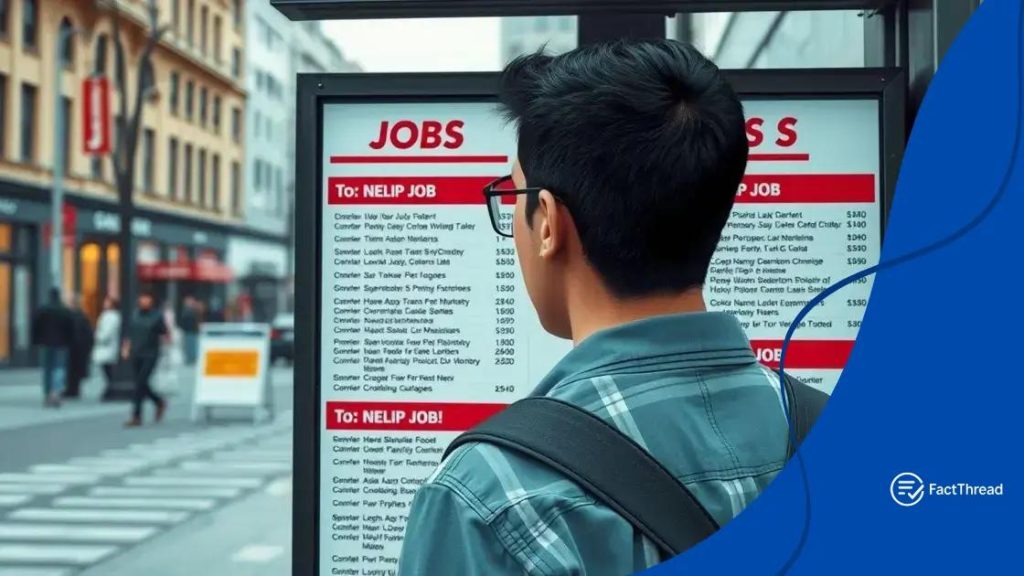Initial jobless claims slightly increase amid expectations

Initial jobless claims are weekly requests for unemployment benefits that indicate job market health; rising claims suggest economic challenges while falling claims signify stability and growth.
Initial jobless claims slightly increase, sparking conversations about the current economic landscape. Have you wondered how these shifts could impact job seekers? Let’s dive into the details.
Understanding jobless claims statistics
Understanding how jobless claims statistics work is essential for grasping the state of the job market. These statistics provide insight into the number of people filing for unemployment benefits each week. This data can indicate trends in employment and economic stability.
Importance of Jobless Claims
Jobless claims are more than just numbers. They reflect the challenges that many people face in finding work. A rise in initial claims may suggest a struggling economy or layoffs in specific industries. For example, industries such as manufacturing and retail can fluctuate greatly based on market demands.
Factors Affecting Jobless Claims
Several factors influence the number of jobless claims:
- Seasonal employment changes
- Economic downturns
- Natural disasters
- Policy changes regarding unemployment benefits
Understanding these factors helps us see why claims might rise or fall. For instance, during the holiday season, claims often dip as companies hire seasonal workers.
Interpreting the Data
Reading jobless claims statistics requires analyzing trends over time. A sudden spike in claims can raise alarms, while consistent drops often indicate a recovering economy. Checking the data regularly can offer clues about how job recovery is progressing.
By looking at jobless claims alongside other economic indicators, like job growth and wage increases, we can get a clearer picture of the overall job market.
Recent trends in jobless claims
Recent trends in jobless claims give us a glimpse into the dynamics of the job market. As the economy shifts, understanding these trends can help us predict future employment challenges. For example, recent reports show a slight uptick in initial jobless claims, raising questions about underlying factors.
Current Situation
Currently, many industries are navigating changes, leading to varied jobless claims across sectors. The technology sector, for instance, has seen rapid hiring, while other sectors like retail are experiencing layoffs. This disparity highlights how the economy is evolving.
Key Factors Behind Trends
Several elements contribute to fluctuations in jobless claims:
- Seasonal hiring patterns, especially during holidays
- Changes in consumer demand affecting production
- Economic policies and regulations
- Company restructuring or downsizing
A closer look shows that as the market responds to these influences, jobless claims can fluctuate significantly. Understanding these details can clarify why certain industries are facing challenges while others thrive.
Data trends suggest that while claims may rise in some areas, they can also drop based on positive economic signals, like increased hiring in other sectors. This interplay can shape overall economic recovery.
Factors influencing jobless claims

Factors influencing jobless claims play a crucial role in understanding the job market. Various elements can cause these claims to rise or fall, shedding light on the economic environment. Here are some essential factors that affect jobless claims.
Economic Conditions
Overall economic conditions significantly impact joblessness. A strong economy typically means more job opportunities, which can lead to fewer jobless claims. Conversely, an economic downturn usually results in increased claims as companies lay off workers or reduce hiring.
Seasonal Employment
Seasonal changes in employment also play an important part. For instance, many industries, like retail and agriculture, have fluctuating demands throughout the year. These seasonal variations can lead to temporary increases in jobless claims during off-peak times.
Government Policies
Government actions, such as changes in unemployment benefits, can greatly influence jobless claims. For example, extending benefits can delay the urgency for job seekers to find work, potentially leading to higher claims during that time.
- Impact of tax changes on businesses
- Regulations affecting hiring practices
- Subsidies for specific industries
By keeping a watchful eye on these factors, we can better understand the trends in jobless claims and their implications for the workforce.
Additionally, company-specific changes, like layoffs or restructurings, contribute to fluctuations in jobless claims. These changes can vary widely across different sectors.
Implications for the job market
The implications for the job market stemming from jobless claims can reveal much about the economy. When initial jobless claims rise, it may signal potential issues in employment stability across various sectors. This trend often leads to concerns regarding hiring practices and job security.
Effects on Hiring Practices
As jobless claims increase, employers may become more cautious. They might delay hiring or reduce open positions to manage costs effectively. This caution can create a ripple effect throughout the job market, making it harder for job seekers to find opportunities.
Impact on Consumer Confidence
Also, rising jobless claims can impact consumer confidence. When people see more claims, they may worry about their own job security. This anxiety can lead to reduced spending, further slowing economic growth.
In contrast, when jobless claims decline, it typically indicates a more robust job market, encouraging businesses to expand and hire more employees. This positive trend can foster greater confidence among consumers, resulting in increased spending, which is vital for economic health.
Sector-Specific Implications
Different sectors respond uniquely to trends in jobless claims. For instance, technology sectors may continue to hire despite rises in overall claims due to ongoing demand for skilled workers. On the other hand, industries like retail may take a tougher hit during economic uncertainty.
- Greater layoffs may become common in struggling sectors
- Growth in sectors that adapt quickly to economic changes
- Shift towards more flexible work arrangements
Understanding the implications of jobless claims helps both job seekers and employers navigate the job market effectively, allowing them to prepare for upcoming challenges or opportunities.
Future outlook for unemployment rates
The future outlook for unemployment rates is a topic of great interest as it impacts millions of people. Analysts and economists use various data points to predict how the job market will develop in the coming months and years.
Current Trends
Currently, the unemployment rate has shown fluctuations based on economic conditions, including inflation, consumer spending, and overall business health. Analysts closely monitor these indicators to anticipate future changes. Generally, a strong economy signals low unemployment rates, while economic downturns can lead to an increase in unemployment.
Potential Influencing Factors
Several factors will likely influence future unemployment rates:
- Technological advancements changing job requirements
- Changes in government policies impacting labor laws
- Shifts in consumer behavior and demand for goods
- Global economic events affecting trade
These factors create a complex environment for predicting unemployment rates. For instance, as companies adopt new technologies, some jobs may disappear while others are created, affecting overall employment numbers.
Sector-Specific Developments
Furthermore, different sectors will react differently based on economic shifts. The healthcare and technology sectors may experience growth, while industries like retail may face challenges. Understanding these sector-specific developments helps job seekers position themselves in the job market.
Overall, staying informed about these trends can help individuals and employers prepare for potential changes in employment. As job seekers adapt their skills to meet evolving demands, they can better navigate the job market.
In conclusion, understanding jobless claims, the factors influencing them, and the future outlook for unemployment rates is crucial for everyone. By keeping an eye on these trends, job seekers can better prepare for challenges and opportunities in the job market. Employers also benefit from this knowledge, as it helps them make informed decisions about hiring and retaining staff. Overall, staying informed can lead to better outcomes for both individuals and businesses.
FAQ – Frequently Asked Questions about Jobless Claims and Employment
What are jobless claims?
Jobless claims are requests for unemployment benefits made by individuals who have lost their jobs. They provide insight into the health of the job market.
How do jobless claims affect the economy?
Rising jobless claims can indicate economic struggles, lead to reduced consumer spending, and impact overall growth. Conversely, falling claims suggest a healthier job market.
What factors influence jobless claims?
Factors include economic conditions, government policies, seasonal employment changes, and sector-specific developments. These can all impact the number of claims filed.
What is the future outlook for unemployment rates?
The future outlook for unemployment rates can vary based on economic trends, technological changes, and industry performance. Analysts use various data to predict these changes.